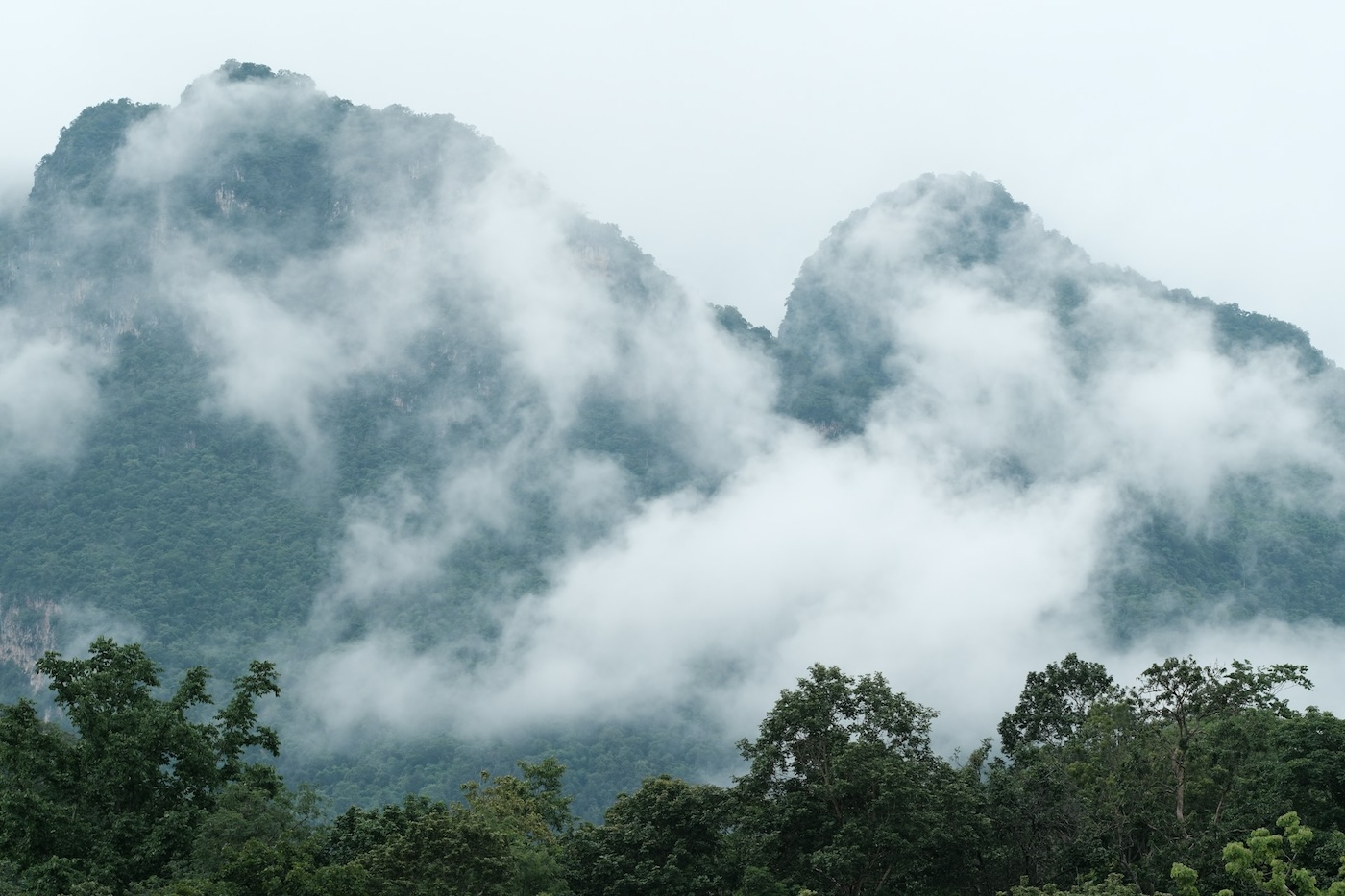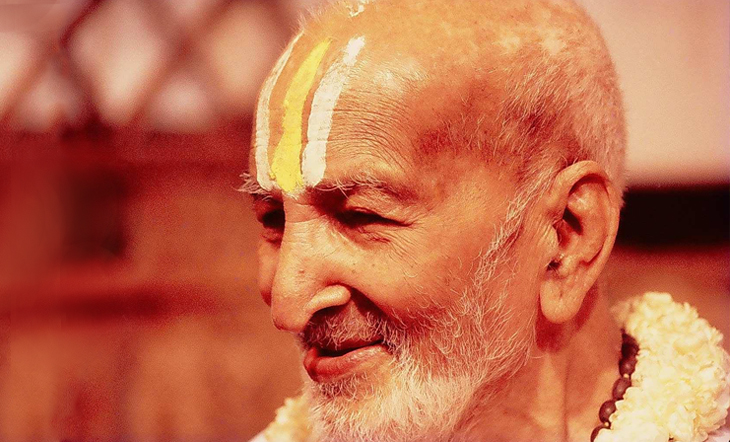The Corpse on Her Lap
A Thai ghost story told by the late Forest Tradition teacher Ajaan Suwat Suvaco The post The Corpse on Her Lap appeared first on Tricycle: The Buddhist Review.

A Thai ghost story told by the late Forest Tradition teacher Ajaan Suwat Suvaco
By Phra Ajaan Suwat Suvaco, translated by Thanissaro Bhikkhu Oct 03, 2024 Photo by Marco J Haenssgen
Photo by Marco J HaenssgenThe following excerpt is from a conversation that took place at Insight Meditation Society (IMS) in Barre, Massachusetts, in the summer of 1989 between Ajaan Suwat Suvavo and one of the retreatants.
I understand that Tibetan monks use visualization when they meditate. Have you ever used visualization in your meditation? Visualization of what?
I’m not really sure. Maybe of the unattractiveness of the body? Visualization, if it’s done in the proper way, can be useful. If it’s done in the wrong way, it can lead to delusion. The process of visualization, in the language of the dhamma, is called sankhara, or fabrication. The Buddha taught us to be wise to the true nature of fabrication, that it’s inconstant and undependable. When we know this truth, we don’t get attached to the things that arise. When knowledge arises and we don’t get attached to it, then we don’t get deluded by it. That’s when it can be useful.
One of the principles of the dhamma is that if you visualize anything in your meditation, you should visualize only things lying within you, so that you see physical fabrication in the body and mental fabrication in the mind in line with their true nature. For example: At present, you’re not yet old, but you’re taught to visualize yourself as growing old in the same way you’ve seen other people grow old. Remind yourself that as the years pass, you’ll have to age in just the same way. Aging is stressful. Your eyes won’t be able to see as clearly as when you were young. Your ears won’t be able to hear in the same way as when you were young. It’ll be painful to sit down, to stand, to walk. There will be all kinds of obstacles. Now, before you grow old, you should accelerate your efforts at developing goodness so that it’ll be a refuge for the heart when old age comes. In other words, accelerate your efforts at practicing the dhamma and training the mind to find peace.
One of the ten recollections (anussati) taught by the Buddha is recollection of death: When you see other people dying, other animals dying, you should reflect on the fact that you will have to die just like everyone else. Repeat the word maranam, maranam (death, death) in the mind and look at yourself: You’re going to have to die for sure. As you reflect maranam, maranam, it may happen that as your mind grows still, a vision of your own death will appear within you. If your mindfulness is good and you have your wits about you, then the more clearly you see death in this way, the more the mind will grow still with an even greater sense of well-being. As you watch death clearly, seeing the body decay, concentration grows even stronger. If you visualize death so that you can see it clearly, you’ll realize that there’s nothing to be gained by growing attached to the body.
When you see the truth in this way, you’ll see that your past greed for things served no real purpose. The anger you’ve felt in the past: What purpose did it serve? You’ll see that greed, anger, and delusion are stressful and serve no purpose—for ultimately, we’ll have to let go of everything that comes along with them. You’ll see that this sense of peace and ease in the mind is what serves a real purpose. When the mind is at peace in this way, it doesn’t want anything else. All it wants is peace, and that’s enough.
I’ll tell you a story. It’s time you listened to something light for a change, so that you won’t be so tense and grim. It’s important that you first let yourself relax. Once, Ajaan Funn, my teacher, was wandering through the forest in Baan Phyy district, Udon Thani province, and stopped to spend the night not far from a certain village. He saw that it was a congenial place and so stayed on there to practice meditation. A woman living in the village would often come in the morning to give him alms, and then again in the evening to hear his dhamma talks. Ajaan Funn taught her to meditate, something she had never done before.
It so happened that she was afraid of ghosts. Wherever she went, she was afraid of ghosts, and so she never went anywhere alone. Especially at night, she was really afraid. When Ajaan Funn taught her to meditate, she didn’t want to, because she was afraid that she’d see a corpse or a ghost. On the following days, Ajaan Funn asked her how her meditation was going, and she couldn’t answer him because she hadn’t meditated. After a while she began to feel embarrassed: “He keeps teaching me to meditate, and yet all I do is hold on to my fear of ghosts.” She decided, “Whatever may happen, I’m going to meditate.” So she started to meditate.
When the mind is at peace in this way, it doesn’t want anything else. All it wants is peace, and that’s enough.
At first she simply focused on repeating the word buddho as she watched her breath come in and out. As her mind began to relax, it began to drift a bit and a vision arose: She saw a corpse lying stretched out in front of her. When she saw the corpse, she began to feel afraid. Then the corpse moved in so that it was lying on her lap. With the corpse on her lap, she couldn’t get up to run away. That’s when she remembered her buddho. She wanted buddho to come and help her. So she kept thinking, buddho, buddho, more and more intensely. As she was doing this, one part of her mind was afraid, the other part kept recollecting buddho, buddho, until the corpse disappeared from her lap and turned into herself. That was when she had a vision of her chest bursting wide open. Her heart was bright, very bright. In the brightness of her heart she could see all kinds of things. She could see what other people were thinking, what animals were thinking. She knew all kinds of things and felt really amazed. From that point on her fear of ghosts disappeared. Her heart grew peaceful and at ease.
The next day she went to see Ajaan Funn. Ajaan Funn was sick with a fever, but he forced himself to get up to greet her and give her a dhamma talk, as he had on previous days, just as if he wasn’t sick at all. After the talk, she immediately said to him, “Than Ajaan, your heart isn’t bright and blooming at all. It looks withered and dry. You must be very sick.” Ajaan Funn was surprised: “How does she know the state of my mind?” But he had noticed that her manner was different from what it had been on previous days. She was very composed and polite. She had bowed down very politely, her words had been gentle and very respectful. When she commented on his heart that way, he wondered: “Does she really know the state of my mind?” So when she returned to the village, he forced himself to sit and meditate to the point where the fever broke and went away. His heart grew peaceful, bright, and at ease. The next day, when the time came that the woman would come, he decided to play sick in order to test her. When she arrived, he didn’t get up to greet her and stayed lying down as if he were sick. After she bowed down, she sat to meditate for a moment, and then said, “Why, your lotus”—meaning his heart—your lotus is really blooming!” That was when Ajaan Funn realized that she was really meditating well.
From that point on, she could come in the evening without the slightest fear of ghosts or spirits. And she continued to meditate well. Her mind never deteriorated. To tell the truth, she had never studied in school and didn’t know much of the dhamma, but because of her respect for Ajaan Funn, when he taught her to meditate, she followed his instructions. Whether it was because of her past merit or what, I don’t know, but she gained peace of mind, developed her discernment, and was able to know her own heart and the hearts of other people.
Those of you who have come here to meditate: Don’t underestimate yourselves, thinking that you won’t gain anything or come to any insights. Don’t be so sure! If you keep up your efforts and practice correctly, it might very well happen that you’ll gain insight. If things come together properly, the day will come when you know, when you see the dhamma. It could very well happen.
So keep up your efforts. After the retreat is over, when you go back home, keep using your mindfulness to keep watch over yourself. In your comings and goings, keep training your mindfulness as you do while you’re here, as a means of maintaining the state of your mind through practicing restraint of the senses. This will develop your mindfulness and give it power. That way, you’ll find that things go more smoothly when the time comes to train the mind to be still.
◆
The article was excerpted and adapted from Fistful of Sand, by Ajaan Suwat Suvaco, translated from Thai by Thanissaro Bhikkhu ©1999 Thanissaro Bhikkhu.
![]()
Thank you for subscribing to Tricycle! As a nonprofit, we depend on readers like you to keep Buddhist teachings and practices widely available.

 MikeTyes
MikeTyes 

































